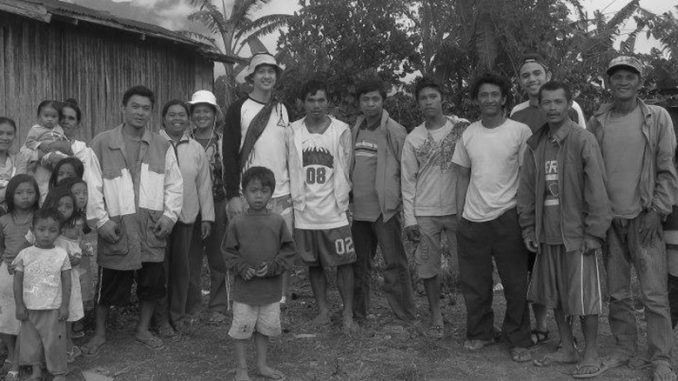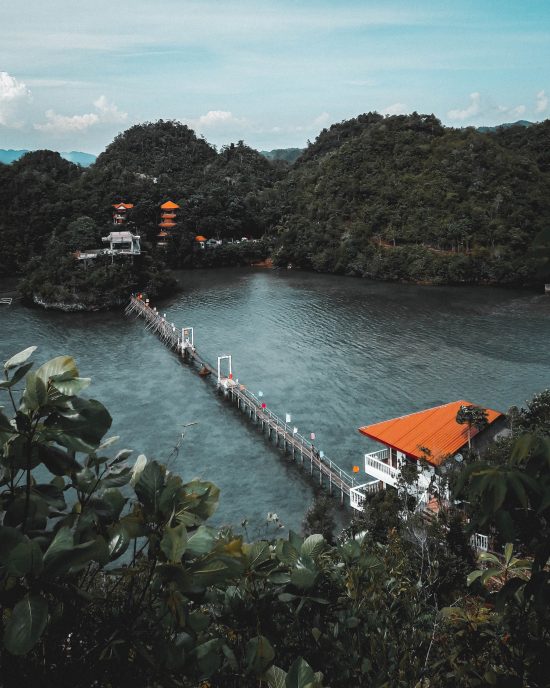
Filipino coffee producers are addressing and adapting to climate change.
BY EMILY MENESES
SPECIAL TO BARISTA MAGAZINE ONLINE
Cover photo courtesy of Matt Lapid
From the editor: This is the second part in a series on coffee in the Philippines—read part one here.
In the Philippines, there’s a popular phrase: Hangga’t makitid ang kumot, matutong mamaluktot. It roughly translates to “If your blanket is small, learn how to bend.” It is a reminder that, when faced with adversity or scarcity, you must simply make do. The people of the Philippines have a long history of “making do”; amidst disaster, the people of the islands have remained resilient—their blanket is small, but they’ve learned how to bend.

With a climate risk index of 11.17, the Philippines is second on the list of nations most threatened by climate change, ranking right below Japan. Nearly half of the Philippines’ population lives in areas prone to climate hazards, including tropical cyclones, droughts, floods, and tsunamis. My parents, who were raised in the Philippine provinces of Pampanga and Cavite, describe floods as normal parts of their childhood, a mere fact of life. I was raised on their stories of natural disasters, but it wasn’t until I was older that I made the connection between their way of life and our changing planet.
But what does this mean for Philippine coffee farmers?
Despite leaders’ plans to industrialize the country by the year 2000, the Philippines is still primarily an agricultural economy. Although coffee production was once a major industry on the islands (in 1880, the Philippines was the fourth-largest coffee-producing country in the world), the Philippine coffee industry experienced mass decline after an outbreak of coffee rust in 1889. It destroyed virtually all of the coffee trees in Batangas, the country’s top coffee-producing region. Today, Philippine coffee farmers are still trying to recover from that major loss—and volatile weather conditions, plus the constant threat of natural disasters, are making the task that much more difficult.
In 2018, Typhoon Ompong damaged nearly 5.3 million PHP (about $110,000 U.S.) worth of coffee trees in Luzon, an island that sits on the northern end of the Philippines. This is just one example of the effect that climate hazards have on Philippine coffee production—and the consequences of disasters like Ompong are proving to be long-term. In the aftermath of natural disaster, Philippine farmers whose crops have been destroyed will often resort to drastic means of generating income—such as cutting their trees for lumber, or giving way to urbanization and selling their land altogether. Though these decisions provide immediate cash flow, they pose a threat to the farmers’ long-term livelihoods.
In response, organizations like The Cacao Project and BaTaFaMa (Bagobo Tagabawa Farmers Association) are working with farmers to create more sustainable, future-oriented solutions. Philippine coffee producers have begun diversifying their harvests to include weather-resilient crops like bananas and pineapples: what they call “disaster day crops.” In addition, they’ve begun intercropping Arabica coffee plants under pine and alder trees in order to provide shade in drier regions. The overarching goal is to empower coffee farmers and slowly but surely reforest the land, ushering in a return to a more lush, more climate-resilient country.
Though the road ahead is long, the movement to protect the Philippine coffee industry is growing every day. For those outside the Philippines, we can support the movement by buying fair-trade and direct-trade Philippine coffee (from companies like Kalsada Coffee and Paramount Coffee PH) and supporting the on-the-ground work of organizations like the Bagobo Tagabawa Farmers Association. The climate crisis is a multifaceted issue—one that must be faced through a series of collaborative solutions. Together, we can work to empower the people on the producer end of the coffee chain.

ABOUT THE AUTHOR
Based in Los Angeles, Emily Joy Meneses is a writer and musician passionate about culture and collective care. You can regularly find her at Echo Park Lake, drinking a cortado and journaling about astrology, art, Animal Crossing, and her dreams. Explore her poetry, short stories, and soundscapes on her website.

